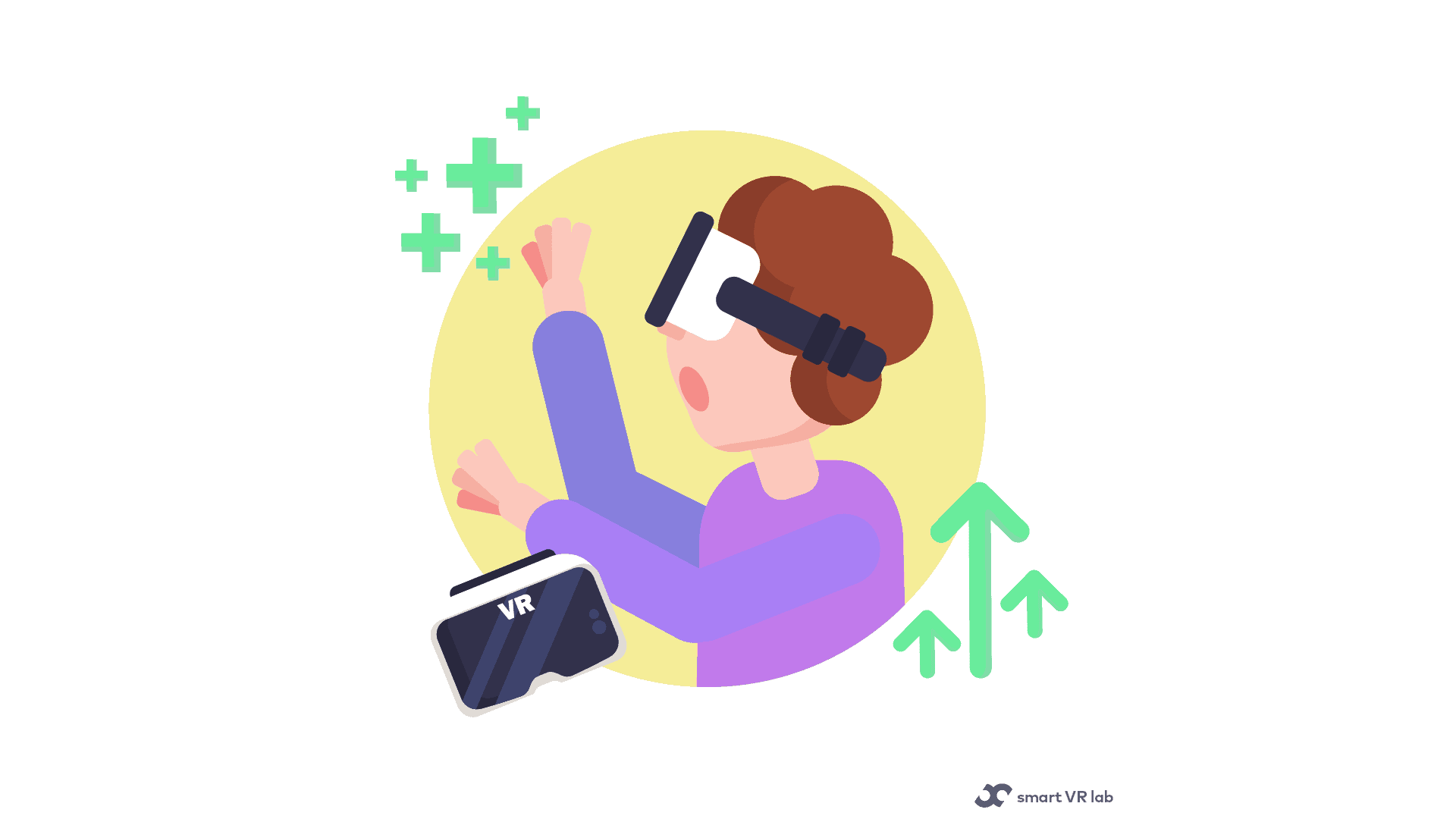Starting out with VR, we had no clearer picture of what advantages and disadvantages VR training had to offer than any other amateur. By now, after years of experience, the possibilities and feasibility of VR content over regular video for training can be assessed much more easily. So, what are the benefits of E-learning and VR in training?
- Possibility to repeat training
- Cost savings (teacher attendance)
- Consistent information disclosure
- No geographical limitations
- Progress tracking analytics
- High engagement rate
- High retention rate
To try and elaborate on these benefits, this article provides more detailed explanations and examples that illustrate when VR is useful compared to other learning methods.
Alternatives To Virtual Reality Training
To assess when VR is useful, it is important to start with all possible alternatives and see how they compare. In many cases it rings true that every advantage has a disadvantage attached to it. Therefore, it often means finding the right trade off between cost, quality and learning goals- and assessing your corresponding needsClassroom Learning
Classroom teaching – teaching with class? When dreaming of cool and innovative new ways to teach it can be easy to forget the most classical and traditional way of teaching: a lecture. It might have quite some disadvantages compared to online learning, but its biggest advantage might still make it worth it: human interaction.
Advantages
- Human interaction makes not only for a more fun experience, it can also be much more engaging, and students and instructors can interact with and learn from each other.
- Peer to peer learning is an important component to learning, the classroom allows for pushing the boundaries of the knowledge of the teacher and your peers.
- External motivation due to other students. Some people need to be surrounded by people who are learning to keep them motivated – that works best in a classroom. Others prefer to be given the space to move at their own pace.
- Custom tailored to specific questions, needs or experiences.
Disadvantages
- No way to repeat training individually for rehearsal or when somebody missed the lecture.
- Students have to be geographically located in the same place.
- Teacher has to attend (and be paid) every time.
- Inconsistency in information disclosure when a teacher is replaced by another teacher or when different groups have different teachers.
- Human interaction works only if students willingly interact during class
E-learning
E-learning might not be around quite as long as classroom learning, but long enough to be certain of one thing: it comes with great benefits! In most use cases, it serves its purpose perfectly well – no matter if it’s text or video based. So, what about those benefits?
Advantages
- Possibility to repeat training individually for rehearsal or when somebody missed the lecture.
- Teacher has only to attend (and be paid) during the recording of the training.
- Consistency in information disclosure because all students get the exact same course.
- Learning Analytics of students behaviour
- Mobility as students can follow the course on a laptop, phone or desktop and do not have to be geographically located together
- Students can interact with and learn from each other in writing. All questions can be posted in a thread so all others can see them and it can cumulatively build up. It takes more time to write something than to speak so people might be reluctant to contribute.
- Students can control the pace of the subject themselves. Some students need more time to comprehend material than others – leading to less effective learning for both parties. Faster students get easily bored and slower students do not get the time to understand the matter completely.
- With many online learning management systems (LMS) it is possible to track the progress of students instantly and to offer them tools (such as quizzes) to rehearse for themselves
Disadvantages
- No direct human interaction.
- Higher chance of procrastination, possible lack of internal motivation to perform well when not surrounded by other students.
- Not custom tailored to specific questions, needs or experiences. Some teachers might have the ability to compensate and tailor content to the specific needs of individuals or groups. Possibility to integrate feedback loops and answers to questions later.
Virtual Reality Training
The new reality of training and learning: Virtual Reality. Is it worth it and do the benefits fit you? Time to find out. While VR shares many features with E-Learning, there are some integral differences too. One point that certainly cannot be ignored is the accessibility – to access VR special hardware is essential. Once that is overcome though, the power of the learning experience should not be undermined.
Advantages
- Possible repetition of training
- Cost and time savings because of lower teacher attendance
- Consistency in information disclosure
- Mobility
- Interaction with writing
- Course tracking analytics and built-in rehearsing options
Wait – all that is familiar to you already. Those are the same advantages as in E-learning, yes, and they can be applied 1:1 to Virtual Reality training too. Now this is where it gets really interesting though:
- High engagement rate: Overall, VR displayed an improved learning experience when compared to traditional and video learning methods. Some studies also found a higher engagement rate for students in VR when compared to lectures and e-learning.
- High retention rate: According to a number of studies, the long term retention rate of VR education is higher among students compared to other methods. Therefore, VR is not only a good way to illustrate knowledge, but also to make it stick.
Disadvantages
- Hardware availability. The physical and geographical struggle of making sure the VR devices are in the right place at the right time. Nationally, this can usually be no problem but for international teams this can be a challenge.
- Cardboards can be used, but they have poor quality.
Can not ask open answer questions (yet). Currently, only multiple choice questions are feasible because writing text in VRcan be hard and very time consuming. (You could record audio when students answer questions. This is time consuming to listen back. The audio files could also be transcribed in the future. Though transcribing audio in VR is already possible, it still comes with a lot of issues.) VR is developing and improving quickly though and the future possibilities are promising.
Why you should integrate E-learning and VR now
Which of these training methods fit your needs the best only you can adequately assess. However, it is clear to us that in general E-learning as well as Virtual Reality make for the best learning experience and thus have the most potential, both for school education as well as business training.
Especially for businesses though, VR training has become of more and more interest over the past few years. Check out the chart below that illustrates the benefits of VR in corporate training to gain a clearer understanding of how your business can benefit from the use of VR.
Do you already use E-Learning and a LMS? Even better, because integrating your LMS with VR is much simpler and quicker than you might think! To find out more about that, continue reading here: How to integrate your LMS with VR. Trust us, you are merely one step away from the best learning solution.
The benefits of E-learning and VR:
There are multiple ways of transferring knowledge from an instructor to a learner – and all exist for a reason. We found that the most effective way of teaching and learning is with the right combination of E-learning and VR, especially in a business context. This method just proves to have the highest potential with an unbeatable engagement and retention rate.
The most effective way is the combination of E-learning and VR. This method proves to have the highest engagement rate and retention rate. Take your training to a new reality and experience the potential of Virtual Reality yourself.
Smart VR Lab develops and produces training content for businesses across multiple industries. To transform your business, simply contact Smart VR Lab for a demo and set up a meeting with our team. If you have questions on anything related to VR, you can always send us a mail to info@smartvrlab.nl
Request a VRee trial
For a free 4-week trial, demo or simply more information,please leave your email.

